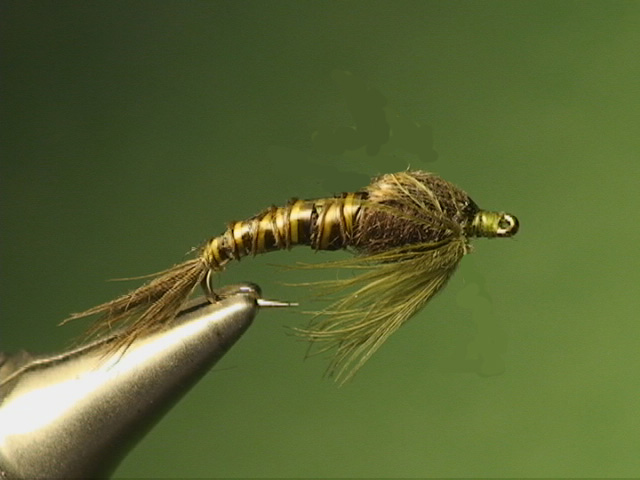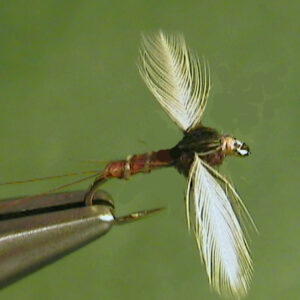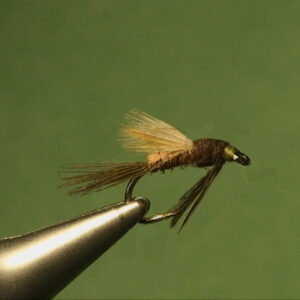Hook Size: 12/14
emerge, the nymphs usually stay down within the rocks on the bottom of the stream
where they are not readily available for trout to eat.The clinger nymphs are not good swimmers. If they become unattached from rocks on
the bottom they tend to tumble in water and are on rare occasions available for trout to
eat. They are flat shaped and can cling to a rock to the point they can be difficult to
remove without having to pry them off.
Just prior to the time these nymphs emerge, they will crawl on the bottom and move to
slower moving water. They don’t necessarily move to shallow water, just slower water.
Most of the time this means they move behind a boulder or large rock to hatch.
When Angie and I first begin to take samples of aquatic insects, we came up short on
finding Quill Gordon nymphs. We proceeded to try to find samples of them in the same
water that we had watched them hatch in previous years. The results were the same. We
could not find any nymphs. The problem was that we were looking for them in the normal
riffles and shallow runs where the current assisted us with our nets. The first time we
placed our kick net in the current seams downstream of a large boulder, we found over
twenty of them in one sample. They were congregated in small areas of calmer water but
within the fast water areas of the stream.
There is another important thing many anglers do not know about the Quill Gordon. They
hatch on the bottom or sometimes on their accent to the surface. They do not hatch in
the surface skim like most mayflies. Their wings are open as the rise to the surface. That
is why wet fly imitations work great during the hatch. Their shucks come off on the bottom
so a trailing shuck fly pattern is of little use unless you are going to weight it down and
fish it wet. Yet another thing that we have noticed is that some sections of any given
stream just do not have any Quill Gordons although they are identical in appearance to
the sections of water that do have them. Quite honestly, we haven’t figured out why this is
the case. The hatches seem to always occur in the same type of water but in random
locations in the streams.
Nymph Presentation:
You can fish the nymph weighted near the faster moving water in which they spend most
of their lives, but unless the hatch is about to begin, other caddis larva and mayfly
nymphs are usually more effective. We suggest that you don’t waste your time fishing
imitations of the clinger nymph until its the time of year for the hatches to start.
In the mornings and early afternoons before the nymphs have begun to emerge, you
should fish weighted imitations in slower moving water that is located within fast water.
This usually means in the current seams where that water is carried downstream from
calmer areas of water behind boulders or rocks. Fish the nymph imitation only up until the
time of day the hatch begins and the trout begin to feed on the emerging nymphs. At that
time you will want to switch to a wet or dry fly imitation of the dun.



